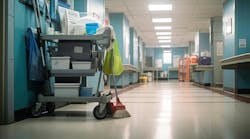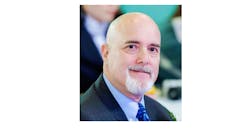In 1970, U.S. Sen. Gaylord Nelson of Wisconsin called for an environmental teach-in, or Earth Day, to be held on April 22, 1970.
"I am convinced that all we need to do to bring an overwhelming insistence of the new generation that we stem the tide of environmental disaster is to present the facts clearly and dramatically," he said. "To marshal such an effort, I am proposing a national teach-in on the crisis of the environment to be held next spring on every university campus across the nation. The crisis is so imminent, in my opinion every university should set aside one day in the school year—the same day across the nation—for the teach-in."
The crisis that motivated Nelson was a 1969 oil spill near Santa Barbara, Calif. At the time it was the largest oil spill in U.S. waters, and now ranks third after the 2010 Deepwater Horizon and 1989 Exxon Valdez spills.
Now, more than 40 years after the original Earth Day, schools and universities are leading the way as the United States continues to grapple with environmental challenges. From oil spills to climate change to industrial pollution to solid waste to over-consumption to human health, the litany of issues continues to expand. Schools and universities have an excellent opportunity to demonstrate leadership and teach the next generation how to make a difference.
Many schools and universities have Earth Day programs with specific curriculum for students, tree planting ceremonies, guest speakers and more, but administrators also should consider recognizing the efforts that the cleaning and maintenance departments are making.
This is important because cleaning has such large impacts on health and the environment. For example, in the United States the commercial and institutional cleaning industry (which excludes household products) consumes:
•6 billion pounds of cleaning chemicals, most of which are derived from valuable but non-renewable natural resources such as petroleum. These resources are important to our way of life, but most experts, including those from the petroleum industry, expect them to be depleted within 100 years or so.
•4.5 billion pounds of sanitary paper (this includes toilet tissue and paper hand towels), much of which is derived from cutting down trees. If made from virgin fiber (as opposed to recycled fiber), this would require the cutting of about 25 million trees. Trees are important for regulating our atmosphere and cleaning our water, and provide habitats for countless species.
•1 billion pounds of miscellaneous products such as vacuum cleaners, entry mats, mops, buckets and other materials—this is enough to fill some 40,000 garbage truck loads. And, when a vacuum, entry mat or other piece of cleaning equipment is thrown away, it typically is replaced with something new, which results in additional environmental impacts from the mining of the materials that make the metal wires, motors and the like; petroleum for the plastic components; impacts when these materials are turned into finished goods; and transportation when shipping them from the manufacturer.
Schools and universities will help make our students and future leaders aware of these issues, but let’s not miss the opportunity to help them appreciate the impacts of effective cleaning and the opportunity for them to make a difference in everyday operations.
Ashkin is executive director of the Green Cleaning Network, a 501(c)3 not-for-profit educational organization.


